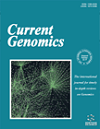
Full text loading...
We use cookies to track usage and preferences.I Understand
Analyzing prokaryotic codon usage trends has become a crucial topic of study with significant ramifications for comprehending microbial genetics, classification, evolution, and the control of gene expression. This review study explores the numerous facets of prokaryotic codon usage patterns, looking at different parameters like habitat and lifestyle across broad groups of prokaryotes by emphasizing the role of codon reprogramming in adaptive strategies and its integration into systems biology. We also explored the numerous variables driving codon usage bias, including natural selection, mutation, horizontal gene transfer, codon-anticodon interaction, and genomic composition in prokaryotes through a thorough study of current literature. Furthermore, a special session on codon usage on pathogenic prokaryotes and the role of codon usage in the phylogeny of prokaryotes has been discussed. We also looked at the various software and indices that have been recently applied to prokaryotic genomes. The promising directions that lay ahead to map the future of codon usage research on prokaryotes have been emphasized. Codon usage variations across prokaryotic communities could be better understood by combining environmental, metagenomic, and system biology approaches.

Article metrics loading...

Full text loading...
References


Data & Media loading...

